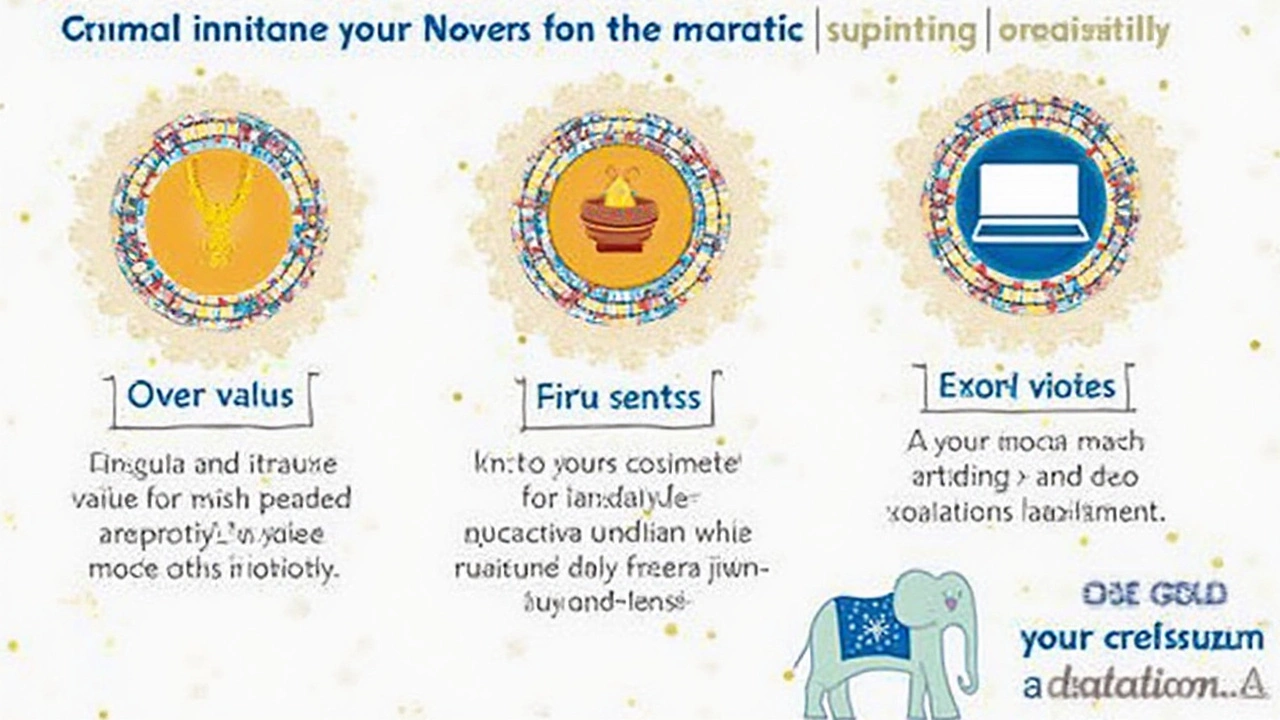Ever shipped a package and wondered if it's really protected by USPS insurance? You're not alone. Many people assume their items are automatically covered, but that's not always the case. Knowing what isn't covered can save you a lot of headaches.
First off, USPS insurance comes with a few exclusions you should be aware of. For starters, no coverage exists for monetary items, like currency and gift cards. If you're sending grandma's birthday cash, better think twice!
Another common pitfall is coverage limits on rare and precious items. Antiques, artworks, and priceless family heirlooms might not be fully protected, leaving you in a tough spot if anything goes wrong during transit.
Here's a handy tip: if your shipment contains high-value items, double-check whether additional insurance is needed, or if a third-party insurer may offer better protection. It could be a game-changer for safeguarding expensive or irreplaceable goods.
- USPS Insurance Basics
- Common Exclusions
- Surprising Coverage Limits
- Tips for Additional Coverage
- When to Choose Third-Party Insurance
USPS Insurance Basics
So, what exactly is USPS insurance and why should you care? Imagine your package getting lost or damaged during delivery. That's where USPS insurance steps in, offering coverage to help recoup your losses. Pretty neat, huh?
When you ship with USPS, you have the option to purchase insurance for items worth up to $5,000. This helps cover the cost if something unfortunate happens to your shipment. It's not automatic; you need to request it at the counter or select it during your online payment process.
How Does it Work?
If something goes wrong, you’ll need to file a claim. Simple, right? Well, not exactly. Make sure you have proof of value, like a sales receipt or invoice, and evidence of damage or loss (think photos or a damage report). Without these, your claim might not stand a chance.
- Step 1: Prepare all necessary documentation (proof of value and evidence).
- Step 2: File a claim online via the USPS website – it's pretty user-friendly!
- Step 3: Wait for USPS to review your case and determine the outcome.
Package coverage isn’t just about the money; it's about peace of mind. Shipping treasures to friends or customers shouldn't be a gamble, and knowing your options sets you up for success.
| Value of Insurance | Cost |
|---|---|
| Up to $100 | $2.25 |
| $200 to $300 | $4.60 |
| $5000 (max) | $78.85 |
Remember, not everything is covered, which is why understanding the exclusions can help you make the right decision when shipping precious goods.
Common Exclusions
When it comes to USPS insurance, knowing what isn't covered is just as important as understanding what's included. This knowledge can help protect you from unexpected claims denials.
Non-Mailable Items
USPS has clear restrictions on certain hazardous or prohibited goods, and insurance won't cover these. We're talking about things like firearms, explosives, and live animals. Make sure to double-check these restrictions before sending.
Monetary Instruments
This one's big: USPS insurance doesn't cover cash, coins, stocks, bonds, and similar valuables. So, if you're planning to surprise someone with cash, think of safer alternatives!
High-Value and Unique Items
Items like antiques, artworks, and jewelry can fall outside standard insurance limits. If you're sending any of these, it's worth considering additional insurance options. USPS might not foot the bill for full value, which could leave you disappointed in case of an issue.
Natural Disasters
If your shipped item gets damaged due to an act of God, like a hurricane or earthquake, insurance won't cover it. Unfortunately, Mother Nature isn't on the policy's warranty card.
Improper Packaging
Ensure your package is securely packed. Failure to pack items properly means any resulting damage isn't covered. No one wants to find out the hard way that a little extra tape could have saved a lot of trouble!
To avoid these exclusions tripping you up, always check USPS guidelines and consider if a third-party provider better suits your shipping insurance needs.

Surprising Coverage Limits
If you thought USPS insurance was a catch-all safety net for your shipments, think again. There are some tricky coverage limits that could catch you off guard, especially with high-value items.
High-Value Items Aren't Fully Covered
You might assume that if you pay extra for a higher insurance amount, your precious items are completely safe. But here's the kicker: even with extra insurance, items like jewelry or electronics may only be covered up to a certain percentage of their declared value. If your $2,000 engagement ring gets lost, you'd be out a lot more than you expect.
According to the USPS guidelines, coverage caps are usually imposed on valuable items, sometimes limiting the maximum payout. This is crucial to know when you're sending something truly valuable.
"Postal insurance aims to recover losses, but isn't a substitute for specialized coverage on high-value items," says shipping expert Janet Walker.
Shipping Destination Plays a Role
Believe it or not, where you're sending your package can also affect coverage. Certain international destinations may have unique limits or exclusions, which you wouldn’t face with domestic shipping. Double-check those stipulations before sending important goods abroad.
Documentation and Item Condition
Finally, even if thoroughly insured, achieving your claim requires documentation that proves the condition and value of the item before shipping. This is a step some people overlook until it's too late.
Considering these factors might prompt you to explore third-party insurance options, which sometimes offer fewer loopholes. It's often wise to read the fine print or ask the USPS representatives for clarification to avoid any unwanted surprises.
Tips for Additional Coverage
When it comes to protecting your package, sometimes the basic USPS insurance just doesn’t cut it. Thankfully, there are options out there to bolster your delivery insurance and ensure your peace of mind.
Consider Third-Party Insurers
First up, third-party insurers. These companies often provide coverage for those items that USPS might not fully protect, like high-value jewelry or electronics. They typically offer flexible plans that can be tailored to cover specific risks that standard USPS insurance excludes.
“Understanding your specific needs and getting insurance to match is key,” says Tom Wilson, a logistics expert at ShipSafe. “Third-party providers can offer great protection for unusual or high-risk shipments.”
Double Down on High-Value Items
If you’re sending something particularly expensive, adding extra insurance is generally a smart move. With third-party coverage, you often get higher coverage limits, which can be a lifesaver if you’re shipping items worth a significant amount.
Do Your Homework
Different insurers have different rules and rates, so it’s worth doing a bit of research before committing. Check reviews, compare quotes, and make sure that any insurer you choose is recognized and reputable.
Consider Combining Strategies
Sometimes, combining USPS insurance with third-party insurance can provide an ideal safety net. This approach maximizes coverage and minimizes risk altogether. Just confirm both policies’ terms work seamlessly together, so there’s no complication during a claim.
Ultimately, a bit of extra effort in securing the right shipping exclusions strategy can save a world of trouble. Protecting your shipments isn’t just about playing it safe—it's an art of balancing what’s most valuable with what’s most practical.

When to Choose Third-Party Insurance
Deciding on third-party insurance can be confusing, but it’s a real lifesaver in many cases. For starters, if you're shipping valuable items like jewelry or electronics, USPS coverage might not cut it. You know how electronics can go haywire in transit, right? Well, many third-party insurers provide specialized coverage that the basic postal insurance just can't match.
Another scenario to consider is shipping internationally. Did you know that USPS insurance can be restrictive across borders? It often doesn't cover the whole journey, which is where third-party insurance steps in to pick up the slack.
Third-party insurance is also a smart move if you're running a small business. Regularly sending expensive products? Adding that extra layer of security can be a cost-effective way to protect your bottom line from lost or damaged goods.
When USPS Falls Short
Sometimes, USPS's exclusions can leave you vulnerable. For instance, certain collectibles, antiques, or custom goods might not receive the full payout if damaged. A niche insurer with experience in covering niche items can be more reassuring.
- High-value items: When the item surpasses USPS's maximum coverage.
- International deliveries: For enhanced protection on global shipments.
- Specialty items: Like rare collectibles that need special consideration.
Let’s face it, peace of mind is priceless. If you're ever in doubt, a bit of research and a call to a third-party provider could save you from disaster. Consider the nature of your shipments and your peace of mind before deciding.





